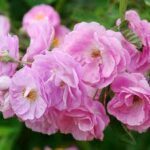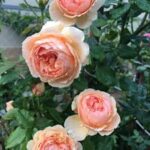
Wildflowers, with their vibrant colors and delicate fragrances, have the power to transform any outdoor space into a haven of natural beauty and tranquility. Beyond their aesthetic appeal, these native blooms offer numerous benefits for people of all ages, particularly the elderly and children. In this article, we explore how wildflowers can be used to design and cultivate living spaces that are conducive to the well-being and enjoyment of seniors and youngsters alike.
**1. Sensory Stimulation and Therapeutic Benefits:**
For the elderly, spending time in a garden filled with wildflowers can provide valuable sensory stimulation and therapeutic benefits. The sight of colorful blooms, the sound of buzzing bees, the fragrance of aromatic herbs—all stimulate the senses and promote relaxation and mental well-being. Creating sensory gardens with a variety of textures, scents, and colors can help seniors connect with nature and engage in therapeutic activities such as gardening and outdoor leisure.
**2. Accessibility and Safety Considerations:**
When designing wildflower gardens for the elderly, it’s essential to prioritize accessibility and safety. Paths should be wide, level, and slip-resistant to accommodate mobility aids such as wheelchairs and walkers. Seating areas with comfortable benches or chairs should be strategically placed throughout the garden to provide resting spots for seniors. Clear signage and well-defined pathways can help prevent accidents and ensure that older adults can navigate the space with ease.
**3. Intergenerational Activities and Bonding Opportunities:**
Wildflower gardens offer an ideal setting for intergenerational activities that bring together seniors and children in meaningful ways. Planting and tending to wildflowers provide opportunities for shared experiences and learning opportunities across generations. Seniors can share their gardening knowledge and wisdom with children, fostering meaningful connections and promoting a sense of belonging and community within the garden.
**4. Environmental Education and Nature Exploration:**
For children, wildflower gardens serve as outdoor classrooms where they can learn about plant life, pollinators, and the natural world. Incorporating educational elements such as interpretive signage, wildlife observation stations, and interactive exhibits can enhance children’s understanding of ecology and environmental stewardship. Engaging in hands-on activities like seed planting, flower identification, and insect observation encourages curiosity and fosters a deeper appreciation for nature.
**5. Play and Imagination:**
Wildflower gardens provide endless opportunities for imaginative play and exploration for children. Natural elements such as logs, boulders, and tree stumps can serve as creative play structures, fostering imaginative play and physical activity. Designing designated play areas within the garden, such as sensory paths, fairy gardens, or butterfly sanctuaries, encourages children to engage with nature in playful and meaningful ways.
**6. Habitat Creation and Wildlife Encounters:**
Wildflower gardens support a diverse array of wildlife, including birds, butterflies, bees, and other pollinators. Encouraging wildlife-friendly gardening practices, such as planting native species and providing water sources, attracts beneficial insects and birds to the garden. Children and seniors alike can enjoy observing and interacting with wildlife, fostering a deeper connection to the natural world and promoting biodiversity conservation.
**7. Therapeutic Horticulture Programs:**
Wildflower gardens can serve as therapeutic horticulture spaces where seniors and children participate in structured gardening activities to improve physical, cognitive, and emotional well-being. Horticultural therapy programs tailored to the needs of older adults and children offer opportunities for socialization, skill-building, and personal growth. Engaging in gardening tasks such as planting, watering, and harvesting promotes a sense of accomplishment and empowerment for participants of all ages.
In conclusion, wildflower gardens offer endless possibilities for creating inclusive and enriching living spaces that cater to the needs and interests of both the elderly and children. By integrating elements of accessibility, safety, education, play, and therapeutic engagement, these natural sanctuaries can enhance the quality of life and foster a deeper connection to nature for people of all ages.










